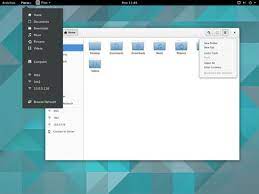Exploring the Security Features of Kali Linux 32-bit for Legacy Systems
Kali Linux 32-bit: Power and Security in a Compact Package
Kali Linux, known for its robust security features and powerful tools for penetration testing and digital forensics, is now available in a 32-bit version. Despite the trend towards 64-bit computing, the developers of Kali Linux have recognised the continued need for a 32-bit version to support older hardware and legacy systems.
With Kali Linux 32-bit, users can still enjoy all the benefits of this cutting-edge operating system on machines that may not be able to run the 64-bit version. Whether you are conducting security assessments, ethical hacking, or simply exploring the world of cybersecurity, Kali Linux provides a comprehensive suite of tools and resources to meet your needs.
While some may question the relevance of a 32-bit version in today’s computing landscape, it is important to remember that many organisations and individuals still rely on older hardware for various reasons. By offering a 32-bit option, Kali Linux ensures that no one is left behind when it comes to accessing powerful security tools.
Furthermore, Kali Linux 32-bit remains true to its roots by providing regular updates and security patches to keep your system protected against emerging threats. The dedicated community behind Kali Linux is committed to delivering a reliable and secure platform for users of all backgrounds.
In conclusion, Kali Linux 32-bit continues to be a valuable asset for those seeking advanced security solutions on older hardware. Its versatility, reliability, and commitment to security make it an essential tool for cybersecurity professionals, students, hobbyists, and anyone interested in exploring the depths of digital defence.
Essential Tips for Effectively Using Kali Linux 32-bit: A Comprehensive Guide
- Ensure your system meets the minimum requirements for Kali Linux 32-bit
- Download the appropriate 32-bit ISO image from the official Kali Linux website
- Create a bootable USB drive or DVD using the ISO image
- Follow installation instructions carefully to avoid any errors
- Update your system regularly to ensure security patches are applied
- Familiarise yourself with basic Linux commands and package management in Kali Linux
- Explore and install relevant tools for your cybersecurity needs
- Join online forums or communities to seek help and share knowledge with other Kali users
- Backup important data regularly to prevent data loss
Ensure your system meets the minimum requirements for Kali Linux 32-bit
Before diving into the world of Kali Linux 32-bit, it is essential to ensure that your system meets the minimum requirements for optimal performance. Checking compatibility with the specified hardware and ensuring that your system meets the necessary criteria will help guarantee a smooth and efficient experience with Kali Linux. By verifying these requirements beforehand, users can avoid potential issues and maximise the benefits of this powerful operating system tailored for security testing and digital forensics.
Download the appropriate 32-bit ISO image from the official Kali Linux website
To make the most of Kali Linux 32-bit, it is essential to download the correct ISO image from the official Kali Linux website. By obtaining the appropriate 32-bit version, users can ensure compatibility with their hardware and access all the powerful security features and tools that Kali Linux has to offer. This simple yet crucial step sets the foundation for a seamless and productive experience with Kali Linux on 32-bit systems.
Create a bootable USB drive or DVD using the ISO image
To utilise the Kali Linux 32-bit version effectively, one essential tip is to create a bootable USB drive or DVD using the ISO image. By following this process, users can install or run Kali Linux on their systems with ease, enabling them to experience the power and security features of this operating system on a variety of hardware configurations. This method not only provides flexibility in deployment but also ensures a smooth and efficient setup process for users looking to harness the capabilities of Kali Linux on their devices.
Follow installation instructions carefully to avoid any errors
To ensure a smooth and error-free installation process when using Kali Linux 32-bit, it is crucial to follow the installation instructions meticulously. By carefully adhering to the provided guidelines, users can avoid potential errors and complications that may arise during the setup process. Paying close attention to each step outlined in the installation instructions will help guarantee a successful installation of Kali Linux 32-bit, allowing users to fully experience the power and security features of this versatile operating system.
Update your system regularly to ensure security patches are applied
It is crucial to regularly update your Kali Linux 32-bit system to ensure that security patches are applied in a timely manner. By staying up-to-date with system updates, you can protect your system against potential vulnerabilities and emerging threats. Updating your system not only enhances its security but also ensures that you have access to the latest features and improvements, providing a smoother and more secure computing experience. Make it a habit to check for updates frequently and apply them promptly to keep your Kali Linux 32-bit system secure and reliable.
Familiarise yourself with basic Linux commands and package management in Kali Linux
To make the most of Kali Linux 32-bit, it is essential to familiarise yourself with basic Linux commands and package management. Understanding fundamental commands such as ls, cd, mkdir, and package management tools like apt-get can significantly enhance your efficiency and productivity when navigating and customising your Kali Linux system. By mastering these core skills, you can streamline your workflow, troubleshoot issues effectively, and maximise the potential of this powerful security-focused operating system.
Explore and install relevant tools for your cybersecurity needs
When using Kali Linux 32-bit, it is essential to explore and install the relevant tools that cater to your specific cybersecurity needs. By customising your system with the appropriate software for tasks such as penetration testing, network analysis, or digital forensics, you can maximise the effectiveness of your security assessments. Take advantage of the diverse range of tools available in Kali Linux to enhance your cybersecurity skills and capabilities.
Join online forums or communities to seek help and share knowledge with other Kali users
Engaging with online forums and communities is a valuable tip for users of Kali Linux 32-bit. By joining these platforms, individuals can seek assistance when encountering challenges, share their knowledge and experiences with others, and stay updated on the latest developments in the Kali Linux community. These forums serve as a hub for collaboration, problem-solving, and networking, fostering a supportive environment where users can learn from each other and collectively enhance their skills in using this powerful operating system.
Backup important data regularly to prevent data loss
Regularly backing up important data is a crucial practice to safeguard against potential data loss on Kali Linux 32-bit. By creating consistent backups of your critical files and information, you can mitigate the risk of unforeseen events such as hardware failures, system crashes, or cyber threats. Implementing a robust backup strategy ensures that your valuable data remains secure and accessible, providing peace of mind and enabling quick recovery in case of any unexpected incidents. Remember, prevention is key when it comes to protecting your digital assets on Kali Linux 32-bit.







